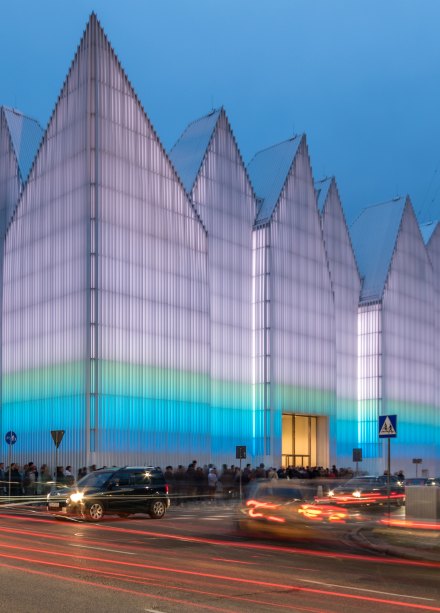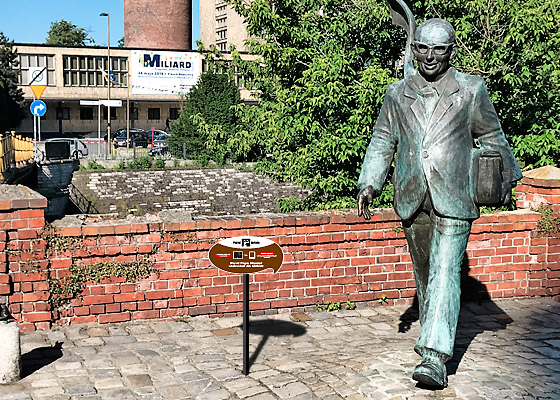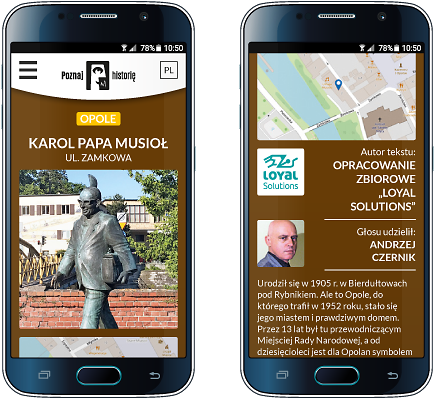Budynek jest całkowicie biały - nocą świeci zazwyczaj pełną bielą, aby podkreślić czystość i piękno muzyki granej w jego wnętrzu. Z kolei jego forma z wieloma skośnymi dachami nawiązuje do strzelistych kamieniczek, które można zobaczyć w hanzeatyckich miastach. Dookoła neogotyk, a obok biała fasada ze szkła, która może rozbłysnąć różnymi barwami.
Blady odcień bieli oznacza, że tego dnia nie odbywają się tu żadne artystyczne wydarzenia. Intensywna biel to sygnał, że tego dnia odbędzie się jakieś wydarzenie. A w dniach świąt państwowych nasza filharmonia jest biało-czerwona.
Sala Symfoniczna, zwana też Słoneczną lub złotą, ma doskonałą akustykę dzięki specjalnej geometrii ścian i sufitów. Wszystkie jej parametry techniczne: siła, równomierność dźwięku, czas opóźnienia czy współczynnik odbić bocznych tworzą warunki niemal idealne dla dźwięku. Porównuje się ją do sali koncertowej Musikverein w Wiedniu. Mieści 953 miejsca. O sali kameralnej, na 192 osoby, muzycy mówią: akustyczna perełka. Czas pogłosu jest w niej zgodny z projektowanym co do jednej setnej sekundy! Nazywana jest Salą Księżycową, bo ma czarne ściany srebrne numery na fotelach i można ją zupełnie wyciemnić.
Nowa filharmonia działa od 2014 roku. budynek powstał w miejscu przedwojennego Domu Koncertowego, czyli Konzerthausu, który po zniszczeniach wojennych rozebrano w 1962 roku. Zespół filharmoników istnieje w Szczecinie już ponad 70 lat.









Visit Social media:
Share Social media: